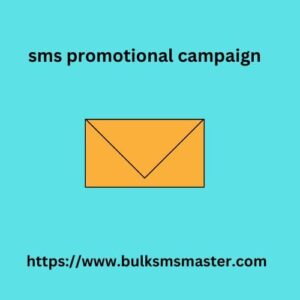The holiday season is prime time for email marketing, as businesses ramp up their marketing efforts to capture the attention of shoppers sms promotional campaign looking for gifts and deals. However, stiff competition and a flood of emails can make it difficult for businesses to stand out. Without a well-thought-out strategy, holiday email marketing can backfire, potentially irritating customers or getting lost in a crowded inbox.
To help you make the most of your holiday email marketing, here are some common mistakes to avoid so your emails resonate, engage, and convert.
1. Sending too many emails to your subscribers
During the holiday rush, it’s tempting to send frequent emails to stay connected with your customers. However, sending too many messages to your subscribers can quickly lead to email fatigue and high unsubscribe rates. If customers feel overwhelmed or annoyed by the volume of emails, they may abandon their subscription or quit altogether.
Solution:
Create a balanced sending schedule that spaces out emails and focuses on high-impact campaigns rather than constant reminders. Consider using segmented sending to send fewer but more targeted emails based on customer interests or past behavior, and offer an opt-out option to let subscribers choose to receive fewer emails during busy seasons.
2. Not Optimizing for Mobile Devices
More people are checking email on their smartphones, and holiday shopping is often done on the go. If your emails aren’t optimized for mobile, you risk poor display, unreadable text and broken links, leading to lost engagement and sales.
Solution: Make sure your email design is mobile-friendly, with easy-to-read text, large buttons, and a simple layout. Use short subject lines that work well on small screens, and test all links and visuals to ensure they work across all devices. A seamless mobile experience increases the likelihood of conversions and engagement.
3. Neglecting personalization
The holidays are a personal time, and generic emails can feel impersonal and struggle to capture attention. Failing to personalize your holiday emails with relevant content and offers can result in lower open rates and conversions.
Solution: Use personalization strategies to make your emails relevant and special. Segment your audience based on past purchases, browsing behavior, or geography to provide tailored recommendations. Simple actions like addressing recipients by name or recommending products based on past purchases can have a big impact on engagement and conversions.
4. Use a generic subject line
During the holiday season, inboxes are flooded with promotions, and with a generic subject line it’s easy to 12 contact form examples to inspire and increase engagement get lost in the noise. Phrases like “holiday sale” or “seasonal offer” are common, making it harder for your email to stand out.
Solution: Use creative, compelling subject lines that spark curiosity and highlight the unique value of your product. Personalize your subject lines whenever possible and use a sense of urgency or exclusivity, such as “Last chance for 25% off holiday favorites” or “A special gift just for you — open it and see!” Testing subject lines with A/B testing can help determine the wording that works best for your audience.
5. Forgetting to add a clear call to action (CTA)
An engaging email without a clear, easy-to-find call to action is a missed opportunity. If recipients don’t know what to do next, they’re unlikely to engage further, and your email’s impact will be minimal.
Solution: Make your CTA eye-catching, concise, and action-oriented. Use phrases like “Buy Now,” “Get Your Discount,” or “See Gift Ideas” to direct readers to a specific action. Make sure your CTA stands out visually by using contrasting colors and placing it in an easy-to-click button format, especially for mobile readers.
6. Ignoring the importance of timing
Timing is critical for holiday emails, as shoppers often look for deals during specific times (like Black Friday or Cyber Monday) and do last-minute shopping closer to the holidays. Sending emails too early or too late can miss the mark and fail to capture your audience’s interest.
Solution: Plan your event calendar to align with key holiday shopping periods. Send early-bird offers to proactive shoppers, exclusive promotions on peak days, and last-minute reminders for late buyers. Use time-sensitive language to encourage quick action, and consider sending reminders as the holidays approach to attract last-minute shoppers.
7. Ignoring Cart Abandonment Opportunities
During the holiday season, cart abandonment increases as shoppers browse multiple sites in search of the best deals. If you’re not following up on cart abandonment, you’re missing out on valuable opportunities to win back potential sales.
Solution: Set up automated cart abandonment emails to remind shoppers of the items they left behind and gently encourage them to complete their purchase. Adding limited-time discounts or highlighting low stock can increase urgency and boost conversions.
8. Forgetting to test your email before sending
During the holiday season, there’s no time for technical errors. Broken links, formatting errors or typos in emails can damage credibility and frustrate customers, leading to lost sales and reduced engagement.
Solution: Test every aspect of yeezy 350 boost v2s your email, including layout, links, and visuals, across multiple devices and email clients (e.g., Gmail, Outlook, Yahoo) before sending. Send test emails to yourself and your team to uncover any issues. Consider A/B testing different email elements (e.g., subject lines and CTAs) to improve performance before rolling out a full campaign.
9. Ignoring customer preferences
Not all customers want the same offers or content, and not taking into account customer preferences can result in sending irrelevant emails that can turn them off. Sending the same holiday content to everyone on your list may not satisfy certain audience segments.
Solution: Use past behavior and preference data to tailor email content to different groups. Send product recommendations that match each customer’s interests and offer an “opt-out” option if they want less holiday email volume. Customized emails make customers feel valued and increase the chances of conversions.

